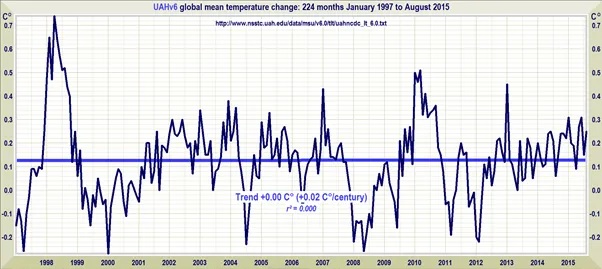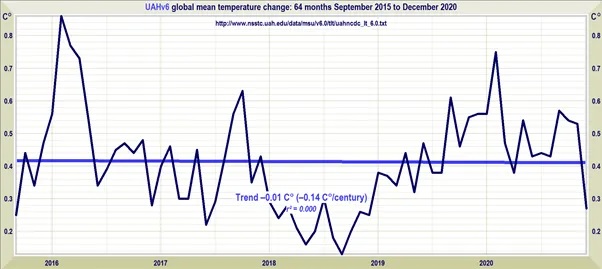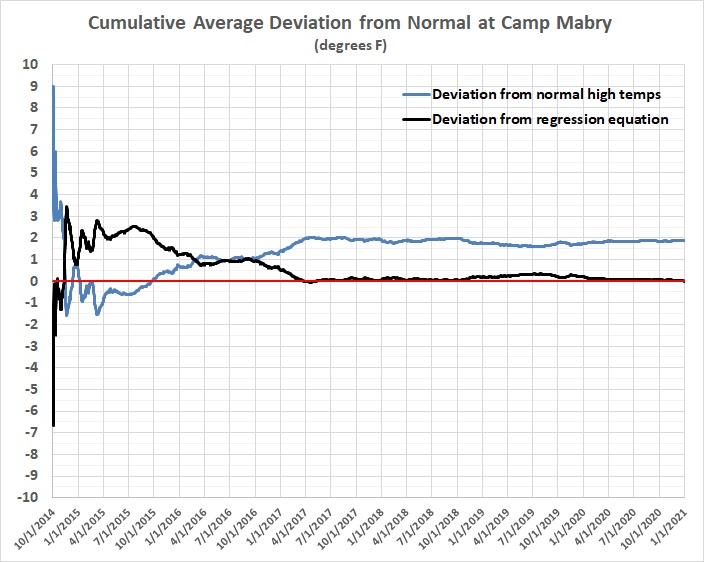Christopher Monckton of Brenchley — who, contrary to Wikipedia, is not a denier of “climate change” but a learned critic of its scale and relationship to CO2 — posits a new “pause” in global warming:
At long last, following the warming effect of the El Niño of 2016, there are signs of a reasonably significant La Niña, which may well usher in another Pause in global temperature, which may even prove similar to the Great Pause that endured for 224 months from January 1997 to August 2015, during which a third of our entire industrial-era influence on global temperature drove a zero trend in global warming:
As we come close to entering the la Niña, the trend in global mean surface temperature has already been zero for 5 years 4 months:
There is not only a global pause, but a local one in a place that I know well: Austin, Texas. I have compiled the National Weather Service’s monthly records for Austin, which go back to the 1890s. More to the point here, I have also compiled daily weather records since October 1, 2014, for the NWS station at Camp Mabry, in the middle of Austin’s urban heat island. Based on those records, I have derived a regression equation that adjusts the official high-temperature readings for three significant variables: precipitation (which strongly correlates with cloud cover), wind speed, and wind direction (the combination of wind from the south has a marked, positive effect on Austin’s temperature).
Taking October 1, 2014, as a starting point, I constructed cumulative plots of the average actual and adjusted deviations from normal:
Both averages have remained almost constant since April 2017, that is, almost four years ago. The adjusted deviation is especially significant because the hypothesized effect of CO2 on temperature doesn’t depend on other factors, such as precipitation, wind speed, or wind direction. Therefore, there has been no warming in Austin — despite some very hot spells — since April 2017.
Moreover, Austin’s population grew by about 5 percent from 2017 to 2020. According to the relationship between population and temperature presented here, that increase would have induced an temperature increase of 0.1 degrees Fahrenheit. That’s an insignificant number in the context of this analysis — though one that would have climate alarmists crying doom — but it reinforces my contention that Austin’s “real” temperature hasn’t risen for the past 3.75 years.
Related page and posts:
Climate Change
AGW in Austin?
AGW in Austin? (II)
UHI in Austin Revisited



